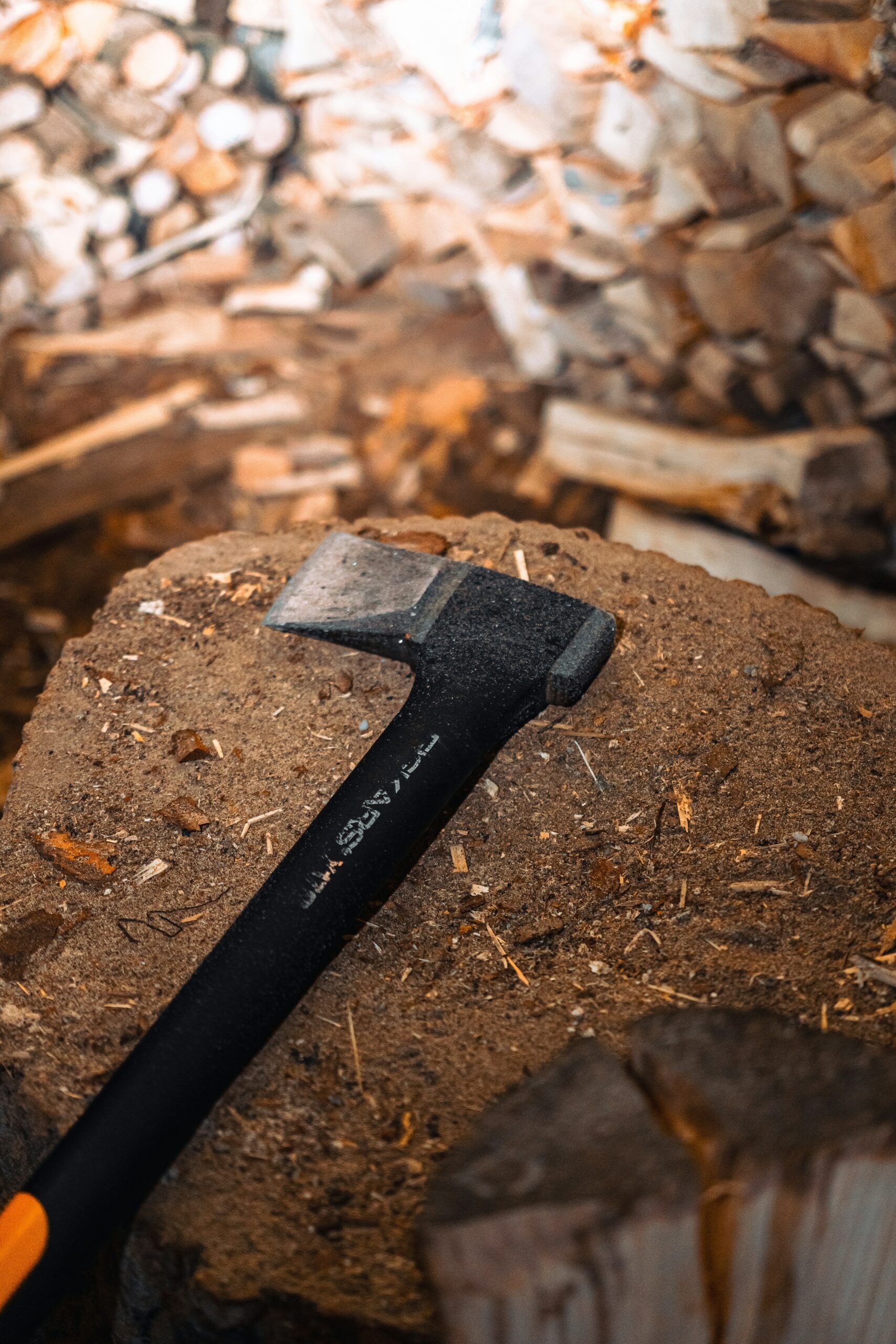Axe throwing isn’t just about the throw; it starts with mastering the right axe throwing stance. Many people struggle to hit the bullseye consistently because they overlook the importance of their stance and body angle. This article explores the key components of the ideal axe-throwing stance, how to adjust it to suit your throwing style and practical ways to improve your performance. By focusing on these basics, you can boost your accuracy, confidence, and overall enjoyment of the sport.
Key Takeaways
- A strong stance significantly improves accuracy and throwing power in axe throwing
- Proper footwear ensures stability and safety during throws, enhancing overall performance
- Common mistakes, like standing too far from the target, can weaken throws and reduce confidence
- Evaluating foot position and weight distribution is crucial for balance and control
- Tailoring stances to individual preferences leads to better performance and improved throwing consistency
Understanding the Importance of Stance in Axe Throwing

The stance plays a key role in axe throwing, impacting both accuracy and power. A strong, balanced position helps throwers remember their skills and apply muscle effectively. Common mistakes related to stance can hinder performance, leading to inconsistency in throws. This section covers how stance influences accuracy, the importance of throwing power, and typical errors to avoid for better results.
The Role of Stance in Achieving Accuracy
The stance of a thrower greatly affects the trajectory and accuracy of the axe. A strong stance allows for better control of force during the motion of the throw, ensuring that the axe flies straight and hits the target effectively. Attention to footwear is vital; wearing the right shoes can provide the necessary grip and stability to enhance safety and performance during the throw:
- A solid foundation is key for maintaining balance.
- Proper alignment helps improve the angle of the throw.
- Appropriate footwear prevents slipping and supports movement.
- Consistent practice builds confidence and accuracy.
How Stance Influences Throwing Power
The stance in axe throwing significantly affects throwing power. When a thrower properly distributes their weight, they create a stable platform that allows for enhanced rotation of the axe. Similar to the mechanics of knife throwing, this alignment helps generate momentum and power, making it easier for participants to achieve the strength required, reminiscent of a lumberjack’s skillful technique.
Common Mistakes Related to Stance
Many throwers make common mistakes related to their stance that can negatively impact their performance. For instance, standing too far away from the target can lead to weak throws, increasing the risk of missing entirely. Additionally, improper grip on the handle of the hatchet can reduce control, affecting both accuracy and confidence. Focusing on maintaining a solid and balanced stance helps avoid these pitfalls and improves overall throwing success:
Key Components of the Ideal Axe Throwing Stance

Evaluating foot position is essential for achieving balance and stability in axe throwing. Proper body alignment, including shoulder and elbow placement, significantly impacts accuracy and precision. Additionally, maintaining a stable center of gravity helps prevent injury and enhances power in each throw. Understanding these components prepares throwers for improved performance and consistency.
Evaluating Your Foot Position for Balance
Evaluating foot position is essential for achieving balance while using a throwing axe or tomahawk. A thrower should keep their feet shoulder-width apart to create a stable base that enhances control and power. This stance allows the arm to move freely, ensuring the weapon follows a straight path toward the target, much like how a lumberjack expertly handles their tools:
- Feet shoulder-width apart promotes stability.
- Proper positioning helps align the body for a better aim.
- Solid footing reduces the chance of slipping.
Determining the Optimal Body Alignment
Determining the optimal body alignment in axe throwing is vital for effective performance. Proper alignment helps in distributing weight evenly, allowing for better control over the axe. Positioning the hand correctly on the handle supports a firm grip, which is essential for accuracy, especially for competitors in the World Axe Throwing League.
- Feet shoulder-width apart for stability
- Weight balanced to enhance control
- Hand grip firm on the axe handle
- Alignment of shoulders and elbows for precision
Maintaining a Stable Center of Gravity
Maintaining a stable center of gravity is vital for effective axe throwing. A proper stance allows throwers to keep their weight evenly distributed, which provides better balance and control. This foundation not only enhances muscle memory but also reduces the risk of injury, making it easier to focus on accuracy and consistency. Remember to also wear eye protection during practice to ensure safety:
- Even weight distribution promotes stability.
- Better balance enhances muscle memory.
- Wearing eye protection ensures safety.
Adjusting Your Stance Based on Throwing Style

One-handed and two-handed axe throws require different stances for optimal results. Each thrower should tailor their stance to ensure comfort and effectiveness. Competitive throwers often adjust their stance compared to recreational throwers, highlighting the need for flexibility in technique. Understanding these variations will aid throwers in achieving consistency and accuracy in their throws.
Differences Between One-Handed and Two-Handed Throws
One-handed and two-handed axe throws demand different stances to achieve the best results. In a one-handed throw, the thrower needs to maintain a more compact stance, allowing for quick motions and easier control of the axe. Meanwhile, a two-handed throw requires a wider base to provide stability and leverage, which helps in generating more power with each throw. Understanding these differences ensures that throwers can adapt their techniques effectively, leading to improved accuracy and confidence.
Tailoring Your Stance to Suit Individual Comfort
Tailoring a stance to individual comfort is essential for effective axe throwing. Each thrower has unique physical attributes and preferences, which can influence their performance. A thrower should experiment with foot placement and body angle to find a position that feels natural, leading to better control and confidence during each throw.
Recognizing Variations for Competitive vs. Recreational Throwing
When considering the differences between competitive and recreational axe throwing, throwers need to recognize how their stance should adapt to each context. Competitive throwers often focus on precision and power, which encourages a more structured stance that prioritizes balance and control. In contrast, recreational throwers may benefit from a more relaxed approach, allowing for personal comfort while still aiming for effective throws, ensuring enjoyment and skill development in their practice.
Practicing Your Stance for Consistent Performance

Practicing the stance is key to achieving consistent performance in axe throwing. Focus on drills that solidify footwork and balance, helping throwers develop a strong foundation. Incorporate stance adjustments into regular practice to ensure effectiveness. Tracking progress and making necessary adjustments can boost overall skills, leading to better accuracy and confidence in every throw.
Drills to Solidify Your Footwork and Balance
Practicing specific drills can significantly enhance footwork and balance in axe throwing. One effective drill involves practicing the throw without the axe, focusing on the stance and weight distribution. By repeatedly adjusting foot placement and practicing balance, throwers can build a solid foundation that translates to improved accuracy and control during actual throws.
Incorporating Stance Adjustments Into Regular Practice
Incorporating stance adjustments into regular practice helps throwers enhance their skills and achieve consistent performance in axe throwing. By intentionally changing foot positioning and body alignment during practice sessions, throwers can discover what works best for them. This approach not only builds muscle memory but also fosters confidence in making real-time adjustments during competitive throws.
Tracking Progress and Making Necessary Adjustments
Tracking progress is essential for any axe thrower aiming for success. By recording each practice session, throwers can identify patterns in their stance and throwing accuracy. This awareness allows for timely adjustments, ensuring that any changes needed for improved performance are made quickly and effectively:
- Keep a journal to note stance and throw details.
- Review recorded practice sessions to spot areas for improvement.
- Adjust stance based on consistent findings to enhance accuracy.
Conclusion
Mastering the fundamentals of stance in axe throwing is essential for achieving consistent success. A strong and balanced position serves as the foundation for accuracy, throwing power, and overall performance. Proper foot placement, body alignment, and posture work together to create a stable base, enabling throwers to refine their technique and hit the target more reliably.
By dedicating time to perfecting these stance fundamentals, you not only improve your individual skill but also enhance the safety and enjoyment of the sport. Whether you’re a beginner or looking to sharpen your technique, focusing on the right stance can transform your axe throwing experience.

